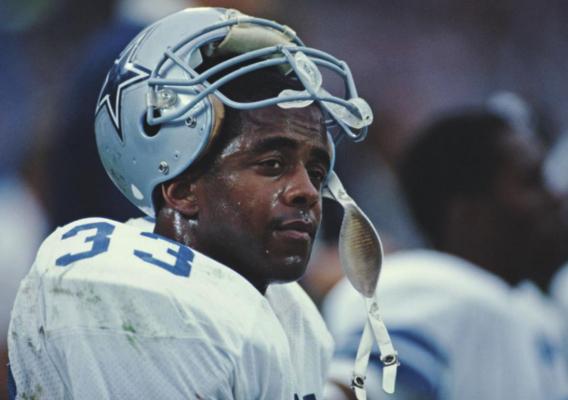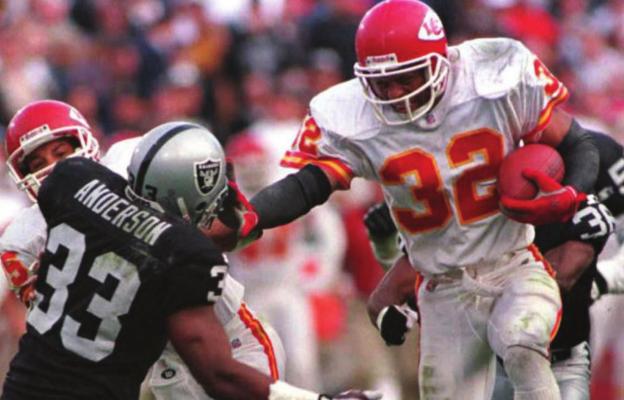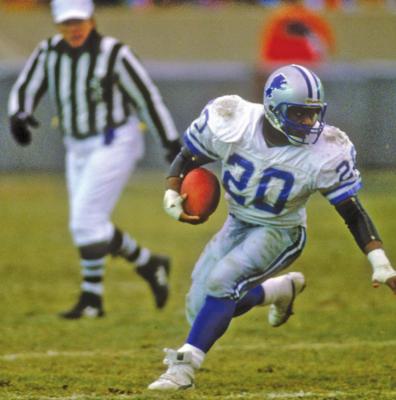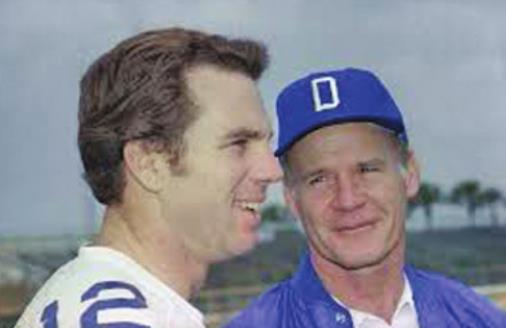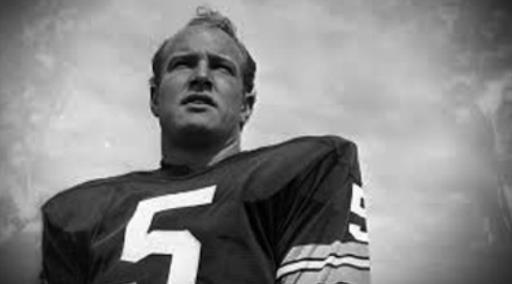Nine Heisman winners in NFL Hall of Fame
I get stuff on my Facebook feed all the time, most of which I ignore. There was one asking “How many Heisman Trophy winners are in the NFL Hall of Fame?” that caught my attention. The reason it caught my attention was that I had no clue what the answer might be.
I don’t like to click on the Facebook ads. My theory is that if I do, I will get deluged with many more ads on the same subject or ads from the same advertiser. For example, I had an acquaintance suffering from pancreatic cancer. I clicked on an ad about pancreatic cancer and for what seemed like forever, I got tons of stuff on that subject. I didn’t click on the ad, but I did go to the internet to try to find the answer to “How many Heisman Trophy winners are in the NFL Hall of Fame?”
As you might suspect, I found out and am ready to share that answer in this spot. Nine. Nine Heisman winners were successful enough in the NFL to get elected to the Hall.
One of the nine is near and dear to the heart of loyal Oklahoma State fans. Barry Sanders, who won the Heisman after an unbelievable season in 1989, was elected to the Hall of Fame in 2004. The others, in order of their selection to the Hall include O. J. Simpson (1985), Roger Staubach (1985), Paul Hornung (1986), Doak Walker (1986), Earl Campbell (1991), Tony Dorsett (1994), Marcus Allen (2003) and Tim Brown (2015).
I don’t need to expound on Sanders’ story around these parts. Suffice it to say that he may have had the greatest individual season in college football history when as a junior in 1988, he rushed for 2,850 yards and 42 touchdowns. A native of Wichita, he attended Wichita North High School and was named to the Kansas Hall of Fame in 1998. He was drafted by the Detroit Lions and was the NFL rushing leader four times. In his nine year career with the Lions, he rushed for 15,269 yards. He was used as a receiver on occasion and had 352 receptions for 2,921 yards. He scored 99 touchdowns running the ball and 10 more as a receiver. Of course, he still has ties to this area as people who drive on Highway 51 west of Stillwater know as they see an auto dealership bearing his name.
Looking at the other names on the list, I will not spend much time on O. J. Simpson. His legal difficulties in the past 25 years have tarnished his legacy. But no one can dispute the man was a great football player.
My eyes gravitate to the name of Paul Hornung. He played at Notre Dame in college and I remember him as being the only Heisman winner from a losing team. I never was a Notre Dame fan, nor was my Dad, who was a Sooner born and Sooner bred OU fan. Notre Dame hadn’t treated the Sooners very well over the years. But 1956 was to be different. Oklahoma whipped the hapless Irish 40-0 at Notre Dame. The Sooners went on to a perfect 10-0 season and were ranked No. 1 most of the year. The only week they weren’t No. 1 was the week of the Notre Dame game when they were No. 2. The 40-0 victory boosted them back to No. 1 where OU stayed the rest of the year.
Dad was never one to gloat, but I was. I bragged to my Notre Dame fan friends on Monday how much better OU was than was their team.
The Sooners, of course, were coached by Bud Wilkinson and Jimmy Harris was the quarterback. Other team members included Tommy McDonald, Jerry Tubbs, Clendon Thomas and of course Ponca City’s Chuck Bowman.
But back to Hornung. He was a very versatile player starting at Notre Dame as a fullback, switching to halfback and in his senior year he was the Irish quarterback. He also played on defense and was among the nation’s leaders in interceptions. Notre Dame had an uncharacteristically bad year going 2-8. But Hornung was named to the Heisman anyway. Some had felt that OU’s McDonald should have won since he came from the No. 1 team. But in retrospect, I can see where a case could be made for Hornung. He was just so versatile. In his senior year he led Notre Dame in passing, rushing, scoring, kickoff and punt returns and punting on offense and passes broken up, interceptions, and second in tackles. Pretty impressive credentials for a Heisman candidate.
In the pros, he played mostly as a running back for the Green Bay Packers. He was also the Packers’ kicker. He had unbelievable speed for a man his size. He once engaged in a 100-yard race with Abe Woodson, who was one of the fastest players ever to put on pads. Hornung won by five yards. He, along with Detroit Lions’ Alex Karras, was suspended for a season for gambling and associating with gangsters. Both players were reinstated after the one season after making commitments to avoid such entanglements ever again.
Those around these parts remember Roger Staubach. He was the quarterback for the Dallas Cowboys for many years. He played for the U.S. Naval Academy during his college career. Like Sanders, Staubach won the Heisman after his junior season in 1963. In that year, Navy finished 9-1 in the regular season and was ranked No. 2 at the end. The Midshipmen played No. 1 ranked Texas in the Cotton Bowl, with the Longhorns emerging as the winner. Upon graduation, he volunteered to serve a one-year tour of duty in Vietnam. This was in an era when guys my age were all thinking about Vietnam. I salute him. As a graduate of the Naval Academy, he could have chosen to serve a term in the United States. As the Cowboys’ quarterback, he led his team to two Super Bowl victories.
Another one who caught my eye was Doak Walker. Walker played college ball at SMU and won the Heisman in 1948, before I was paying much attention to college football. However, I was an avid reader of Sport Magazine back in the mid-1950s and that publication did a big spread on Walker, who was a star for the Detroit Lions. One of my good friends in grade school attended the Methodist Church and I tried to impress him with my knowledge that Walker had attended Southern Methodist when he was in college. As I remember, he wasn’t much impressed. Like Hornung, Walker was a versatile athlete and was also a placekicker and punter in addition to being a running back. He only played six years in the NFL, but he was on two championship teams and compiled enough statistics to warrant inclusion in the NFL Hall of Fame. When he retired, he was doing so because of his business interests, not due to any injury or physical impairment.
Tony Dorsett was another former Dallas Cowboys player to make the list. I became a Dorsett fan when he was a freshman at Pittsburgh for two reasons. One was that he played for Coach Johnny Majors, who had been a favorite of mine when he played in college and again when he was coach at Iowa State. The second was that as a freshman at Pittsburgh, he was named to the All-American team, one of the few freshmen to that date to be so named. He won the Heisman after his senior year, a year that Pitt was the national champion. I liked him as pro as well, as did many of the Dallas Cowboys fans I count as friends.
There are reasons I like the others on the list--Marcus Allen played his final years as a member of the Kansas City Chiefs and Earl Campbell was a beast both in college and in the pros, Even though Tim Brown played for the hated Oakland Raiders, this Chiefs fan will have to admit he had an amazing career, both in college at Notre Dame and in the pros.

